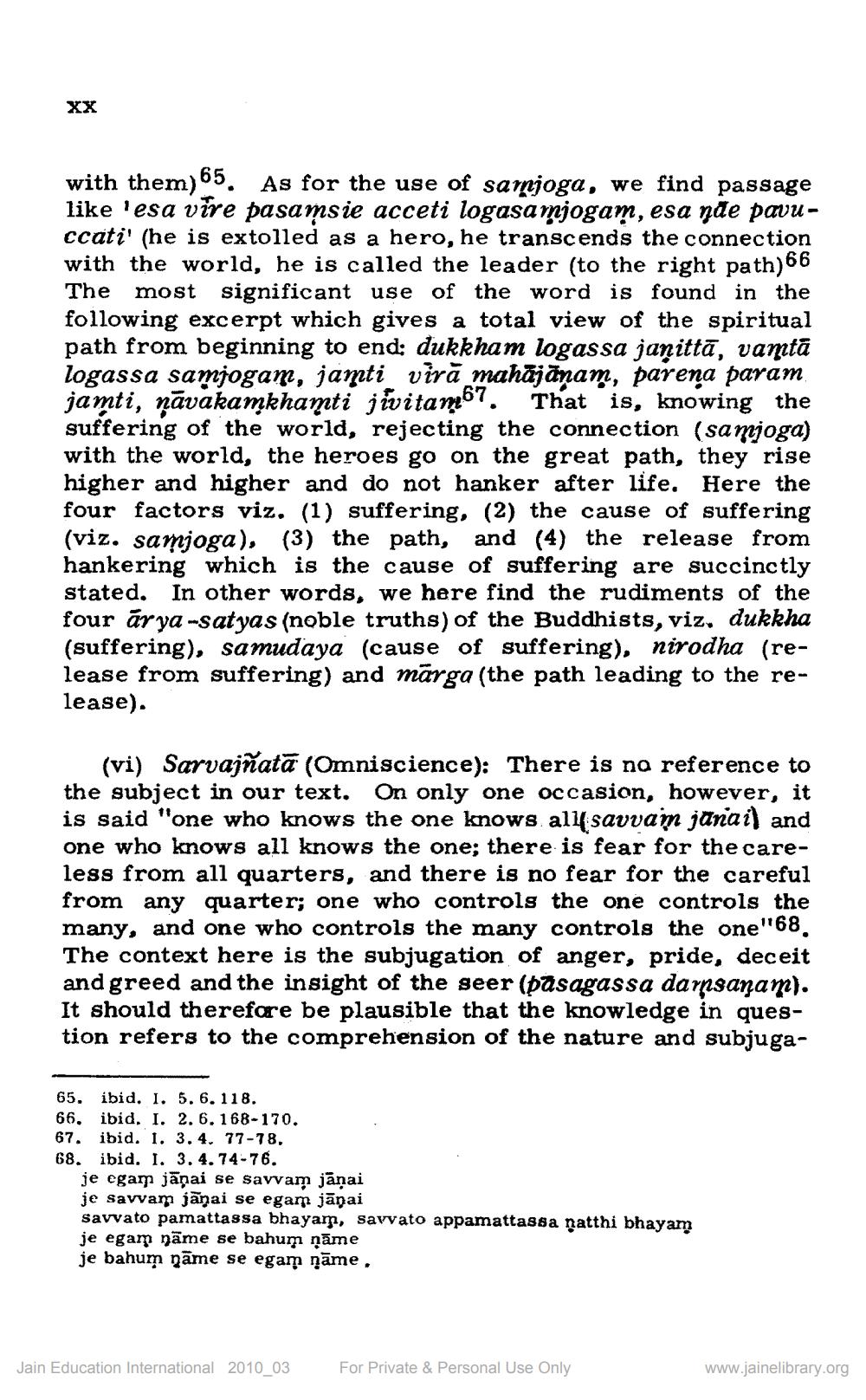________________
xx
with them)65. As for the use of sarnjoga, we find passage like 'esa vire pasamsie acceti logasamjogam, esa nde pavuccati' (he is extolled as a hero, he transcends the connection with the world, he is called the leader (to the right path) 66 The most significant use of the word is found in the following excerpt which gives a total view of the spiritual path from beginning to end: dukkham logassa janittā, vamtā logassa samjogan, jamti viră mahājānam, parena param jamti, nāvakamkhamti jivitamby. That is, knowing the suffering of the world, rejecting the connection (samjoga) with the world, the heroes go on the great path, they rise higher and higher and do not hanker after life. Here the four factors viz. (1) suffering, (2) the cause of suffering (viz. samjoga), (3) the path, and (4) the release from hankering which is the cause of suffering are succinctly stated. In other words, we here find the rudiments of the four ārya -satyas (noble truths) of the Buddhists, viz. dukkha (suffering), samudaya (cause of suffering), nirodha (release from suffering) and märga (the path leading to the release).
(vi) Sarvajñatā (Omniscience): There is no reference to the subject in our text. On only one occasion, however, it is said "one who knows the one knows all savvam janail and one who knows all knows the one; there is fear for the careless from all quarters, and there is no fear for the careful from any quarter; one who controls the one controls the many, and one who controls the many controls the one"68. The context here is the subjugation of anger, pride, deceit and greed and the insight of the seer (pasagassa darpsaņam). It should therefore be plausible that the knowledge in question refers to the comprehension of the nature and subjuga
65. ibid. 1. 5.6.118. 66. ibid. I. 2.6.168-170. 67. ibid. 1. 3.4. 77-78, 68. ibid. 1. 3. 4.74-76.
je egam jāņai se savvam jānai je savvam jānai se egam jāpai Savvato pamattassa bhayam, savvato appamattassa natthi bhayam je egam name se bahum ņāme je bahum pāme se egam ņāme,
Jain Education International 2010_03
For Private & Personal Use Only
www.jainelibrary.org




